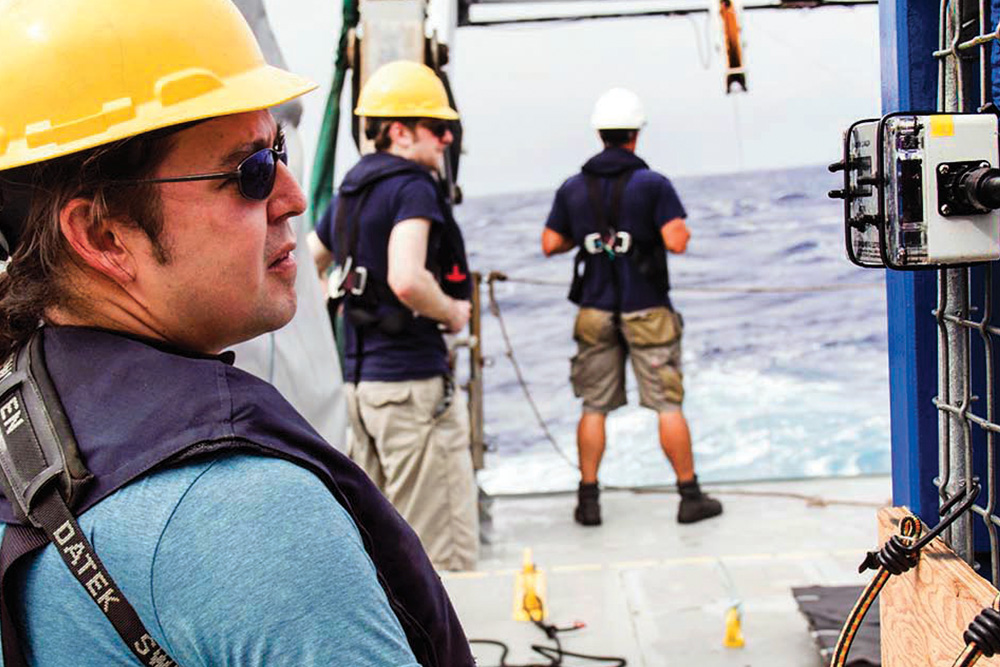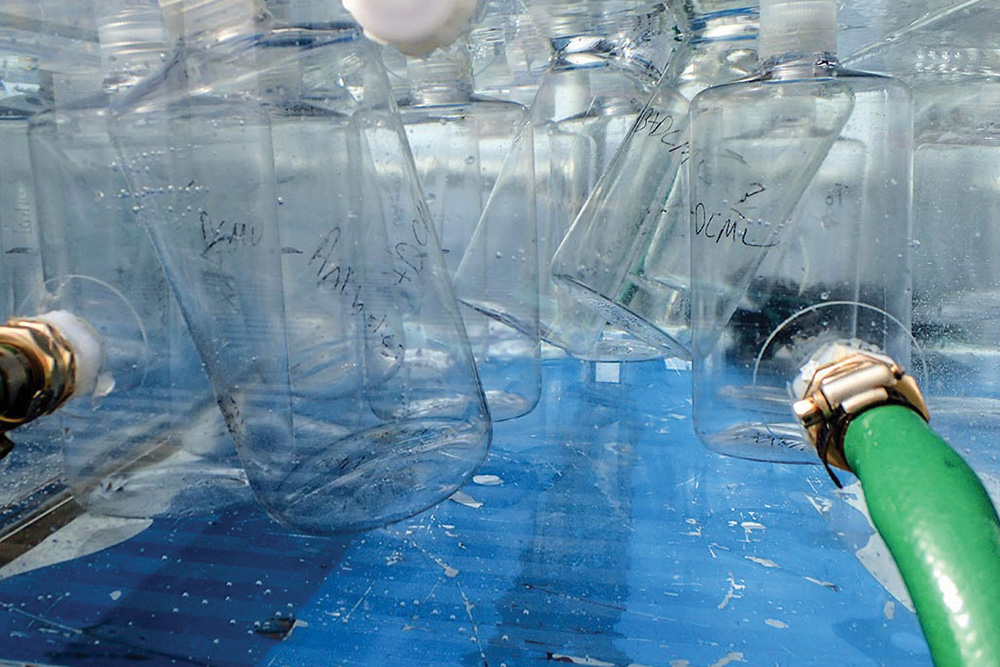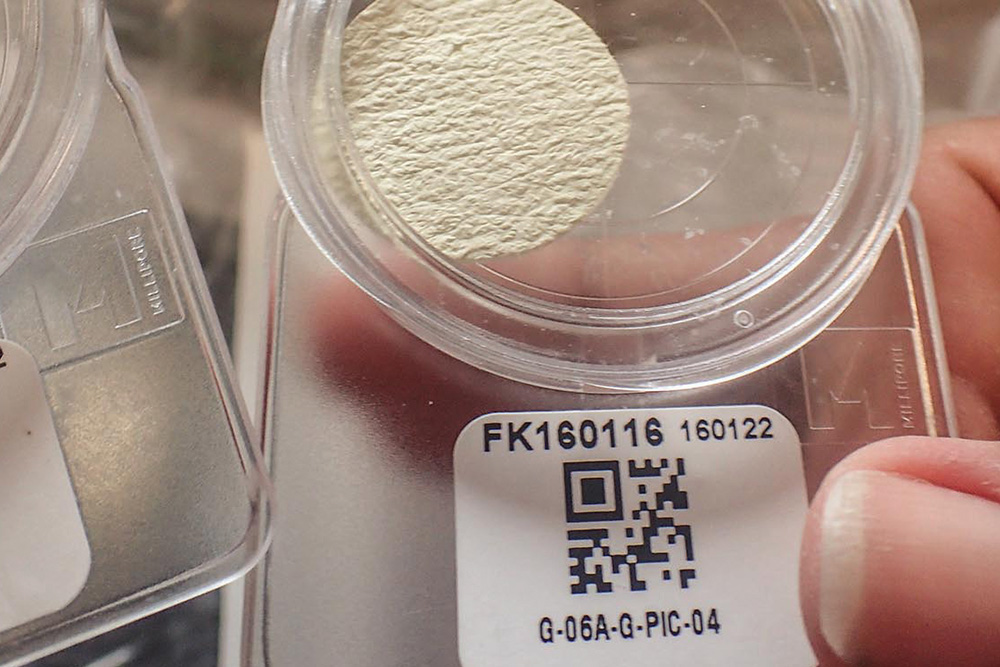Most of life as we know it depends on carbon, nitrogen, oxygen, and iron; elements that get cycled throughout the planet and transported by microorganisms. There are four unique locations in the ocean where oxygen concentration gets particularly low; these places have been labeled oxygen minimum zones (OMZs).
OMZs can occur naturally due to large-scale ocean circulation, yet the biogeochemistry is significantly different compared to oxygen-rich areas. This biogeochemistry, the cycling of carbon and nutrients, is the very foundation of marine ecosystems and has a huge impact on all life on Earth. OMZs appear to be getting bigger based on historical measurements and scientists are trying to understand what this means for general ocean functions.
During the first cruise of 2016, Falkor traveled 7,000 kilometers between Hawaii and Tahiti, to the largest OMZ on the planet to investigate its impacts. The team led by Dr. Mak Saito from Woods Hole Oceanographic Institution, along with scientists from University of Maryland’s Center for Environmental Science and the University of Southern California, used new biomedical methods to examine this unique area.
To understand what controls microbe growth and productivity in the OMZ, the scientists used a new method called Proteomics, to look at the proteins inside an organism. By measuring these proteins, the team was able to observe microbial function and track the deficiencies that may be limiting growth. Proteomics has the capability to identify environmental stresses acting on the abundant microbial populations, allowing a diagnostic capability for detecting changes in ocean diversity and function.
Over the course of the 22-day expedition, the team used CTDs to sample the upper layer of the ocean’s microbial microbiome filtering 85,000 liters of seawater at 17 different stations. “It is hoped that this large dataset will become a valuable resource for others studying a variety of ocean processes and topics,” said Chief Scientist Mak Saito. “We need to be able to understand the myriad of impacts our global human society is having on the chemistry of the planet, and how can we pull back on unintended negative consequences.”
The research completed on this cruise will provide a better grasp of the critical chemical processes being conducted by microbial organisms that live within OMZs, and could eventually help to identify long-term changes in these poorly understood regions. Additionally, because the expedition occurred during a strong El Niño year, the samples gathered will allow for studies on how the warmer seawater conditions influence key microbial processes. Comparisons of this dataset with more typical years will provide valuable insight into ecosystem responses to El Niño.






